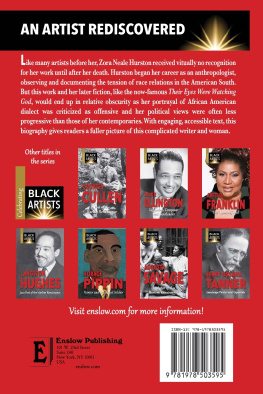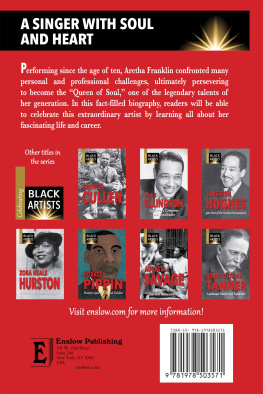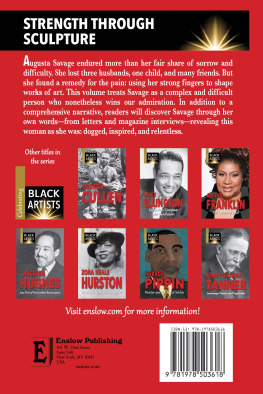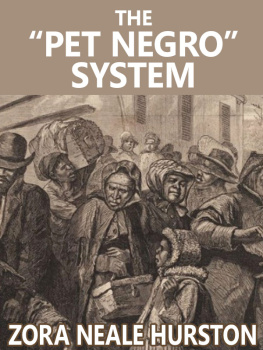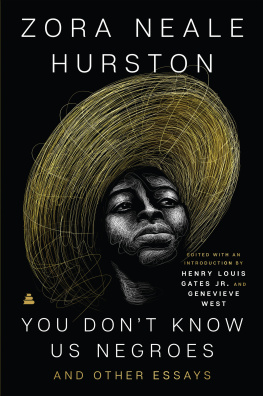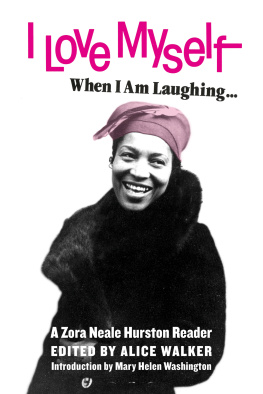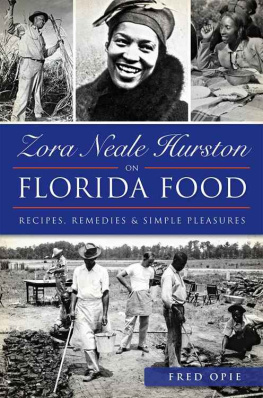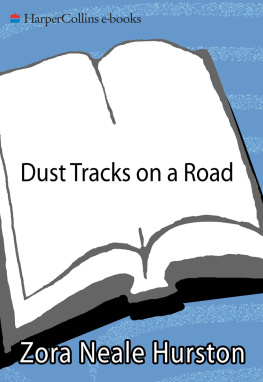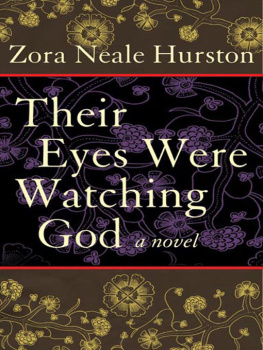
ZORA NEALE
HURSTON
Author and Anthropologist
Published in 2020 by Enslow Publishing, LLC.
101 W. 23rd Street, Suite 240, New York, NY 10011
Copyright 2020 by Enslow Publishing, LLC.
All rights reserved.
No part of this book may be reproduced by any means without the written permission of the publisher.
Library of Congress Cataloging-in-Publication Data
Name: Crompton, Samuel Willard, author. | Etinde-Crompton, Charlotte, author. Title: Zora Neale Hurston: author and anthropologist / Samuel Willard Crompton and Charlotte Etinde-Crompton.
Description: New York: Enslow Publishing, [2020] | Series: Celebrating Black artists | Audience: Grades 712. | Includes bibliographical references and index.
Identifiers: LCCN 2018020369| ISBN 9781978503595 (library bound) | ISBN 9781978505346 (pbk.)
Subjects: LCSH: Hurston, Zora NealeJuvenile literature. | African American women novelistsBiographyJuvenile literature. | FolkloristsUnited StatesBiographyJuvenile literature. | LCGFT: Biographies.
Classification: LCC PS3515.U789 Z68 2019 | DDC 813/.52 [B] dc23 LC record available at https://lccn.loc.gov/2018020369
Printed in the United States of America
To Our Readers: We have done our best to make sure all website addresses in this book were active and appropriate when we went to press. However, the author and the publisher have no control over and assume no liability for the material available on those websites or on any websites they may link to. Any comments or suggestions can be sent by email to .
Photo Credits: Cover, pp. PhotoQuest/Archive Photos/Getty Images.
Contents

Railroad Ties and Long-Haired Ladies
I n more than three decades as a top writer, Zora Neale Hurston wrote novels, plays, and countless short stories. At the same time, Hurston was an impressive anthropologist, working on a particularly important project that came to fruition in June 1939. At this time, the Federal Writers Project (FWP) was hiring numerous writers. Under the umbrella of the Works Progress Administration, the FWP writers collected and reported on specific material for all forty-eight states (Hawaii and Alaska were not yet part of the United States). Hurston was selected to report on Florida.
That Zora Neale Hurston would find employment with the Federal Writers Project is not surprising. She knew as much about African American life, folklore, and history in Florida as anyone alive. But it is somewhat surprising that she was able to reveal, and highlight, several working-class songs. In June 1939, a set of recordings was made in Jacksonville, Florida, with Hurstons recognizable voice playing the leading role.

In addition to writing fiction, Zora Neale Hurston worked as an anthropologist, studying black American folklore and culture.
The Songs
Bella Mina was a song of African American workers who adapted Italian words to the black vernacular. This is followed by Crow Dance, one of Hurstons favorites. On the recording, she explains that the crow was sacred to various Native American groups, and that they passed this belief on to African Americans they encountered in the Deep South. To enact the performance, Hurston gestured strongly with her arms and uttered some words of the song: This crow, this crow gonna fly tonight/ See how he flied, fly/ Oh momma come see that crow. The crow was an embodiment of the natural world, but its ability to fly away was a quality envied by many African Americans who wished to do the same.
African American Workers in Florida
The farther into the Deep South one traveled, the more oppressive the conditions became. No one would argue that life in Virginia or Tennessee was positive for African Americans, but Alabama, Georgia, and Mississippi were reckoned just about the worst. Florida was a special case because it had been settled later than its Deep South counterparts. But the sounds of African American songs were far more than of lamentation. There was, as Zora Neale Hurston was quick to point out, an exuberance to African American life that could not be suppressed or denied, despite any number of hardships.
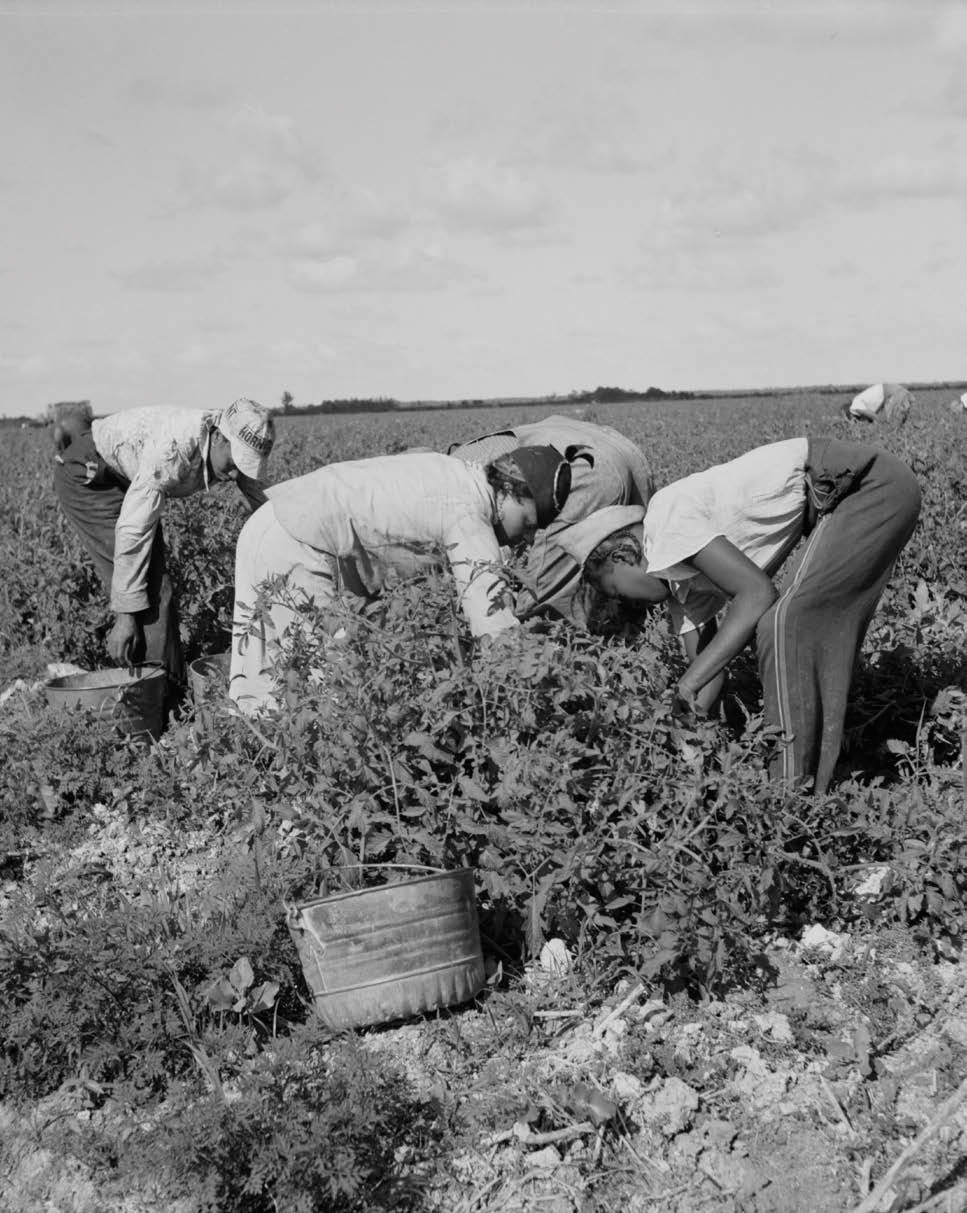
Hurston was especially interested in the songs of African American laborers in the South.
One can imagine that songs such as this helped the railroad workers get through the day. Another song, Ever Been Down, didnt require a question mark at the end. For black workers in the Deep South, there was no question that they had struggled and suffered: Rather be in Tampa/ With the whip-or-will/ Been down so long/ Down dont bother me/ Weep like a willow/ Moan just like a dove.
Ever Been Down was followed by Gonna See My Long-Haired Babe, which entreated workers to Let those hammers ring, boy. Two men faced each other on the railroad track, with hammers positioned breast to breast. The singing line provides the rhythm. One man is the lead singer. But perhaps the most intriguing of the sixteen recorded songs is Let the Deal Go Down.
As Hurston explained it, Let the Deal Go Down is primarily a game of luck and chance, an apt metaphor for adapting to the rapidly changing, and occasionally arbitrary, circumstances of life. Two principals, called pikers, place bets while the dealer works with his deck of cards: Put the money on the wood/ And let the deal go For black citizens who had been given a bad hand by institutional racism and systemic oppression, this was an especially potent metaphor.
Recorded on June 18, 1939, these songsand commentaryare one of the few direct ways one can connect with Zora Neale Hurston. Her talent is known to the millions who have read Their Eyes Were Watching God and other books, but her presence is often elusive.
Florida Folklore
Hurston had a special opportunity. Born and raised in rural Florida in an all-black township, Hurston knew about African American folklore and was skillful in presenting it to a white audience. One can suggest, however, that there were tension and pain along with success. Being able to move between black and white worlds gave Hurston many opportunities; at the same time, she seldom had a ready-made community: she had to invent one constantly. Hurston was one of many talented African American artists of the first half of the twentieth century. She achieved a high level of success, but it came at a price.

Triumph and Trauma
Z ora Neale Hurston led a complicated life. Right from the beginning, there were discrepancies and variations in the accounts of her life story. One of the few chronological periods where the evidence is straightforward is her earliest years.
Recorded history has suggested that Zora was born in Notasulga, Alabama, on January 7, 1891. But even this was later opened to dispute. Later in life, Zora claimed she was born in Eatonville, Florida, on January 7, 1901, boldly shaving an entire decade off her age. Virtually all the documentary evidence points to 1891, however, and it is extremely likely she was born in rural Alabama, rather than northern Florida.
Next page
